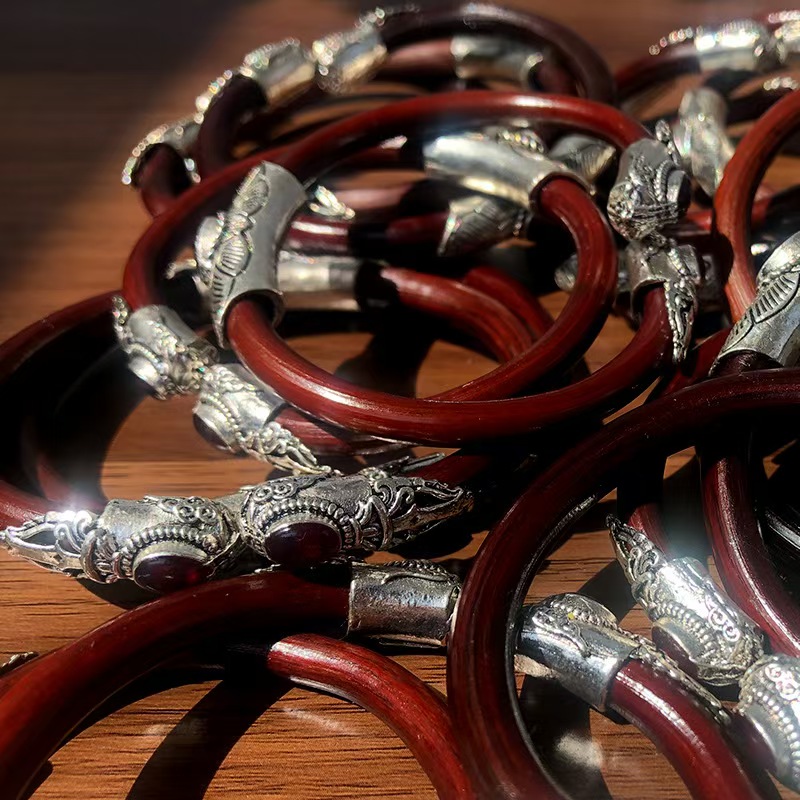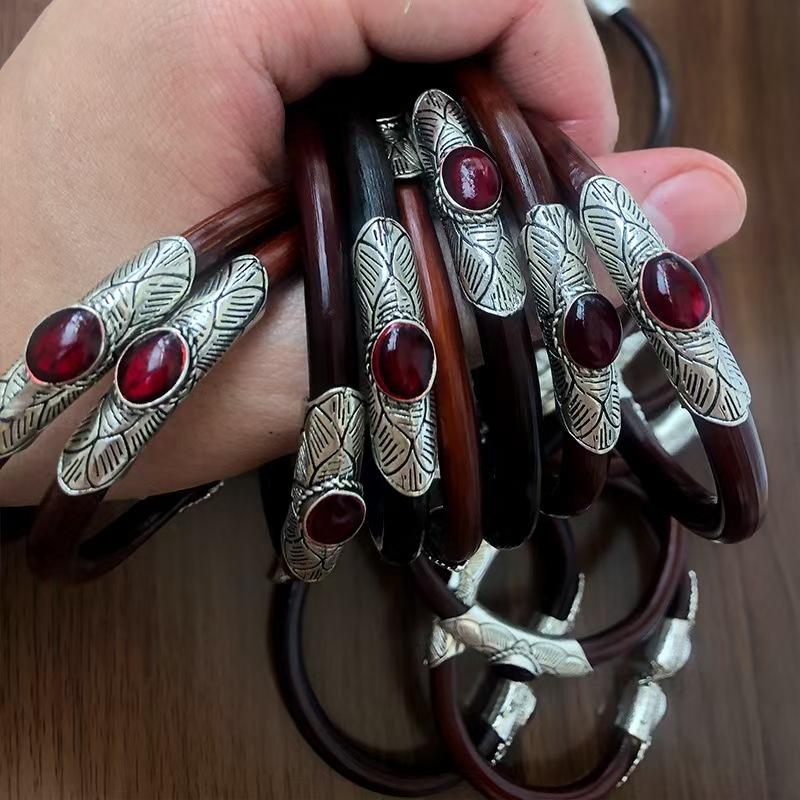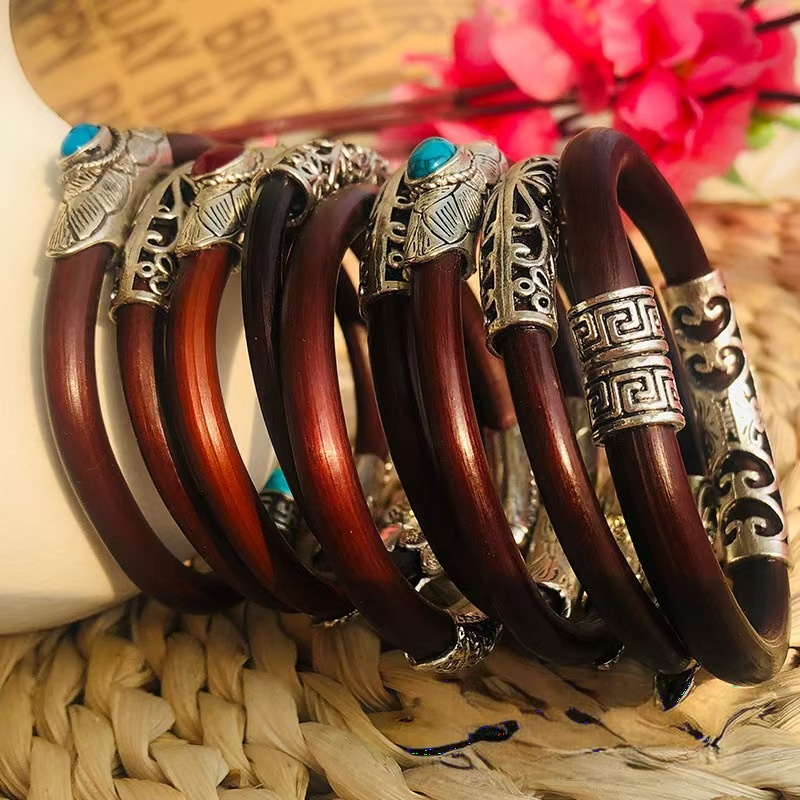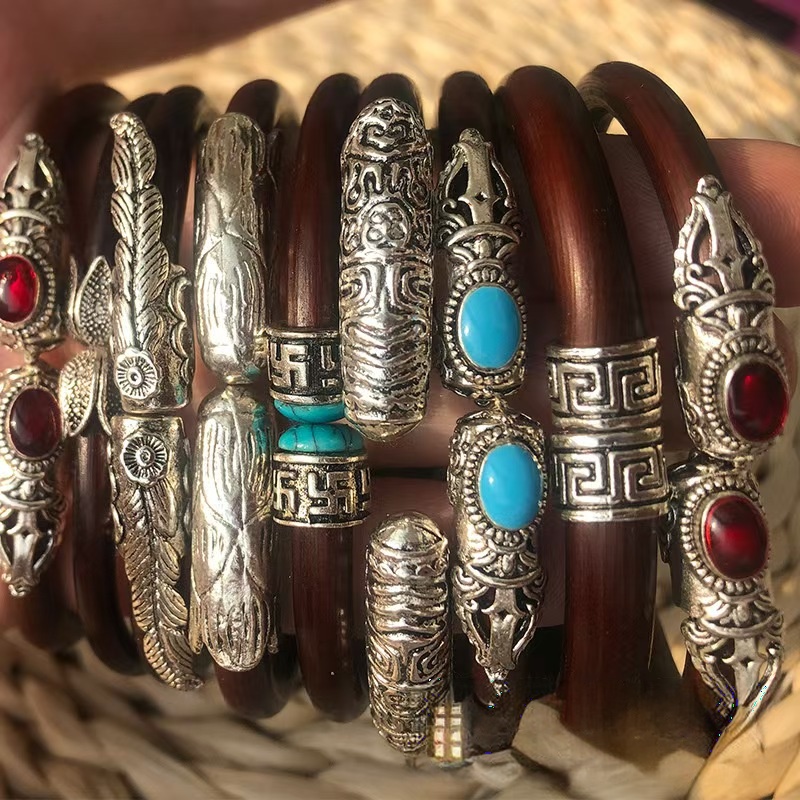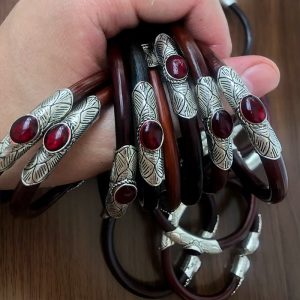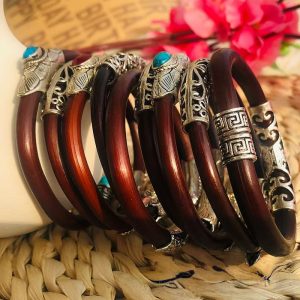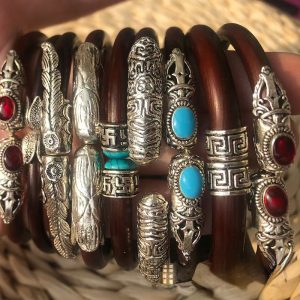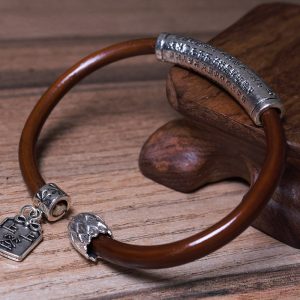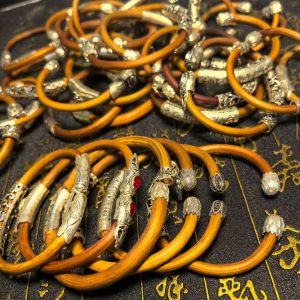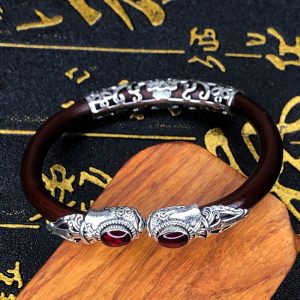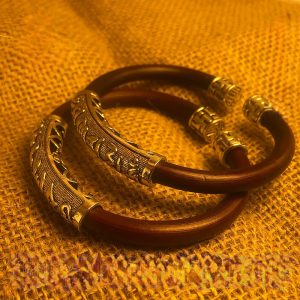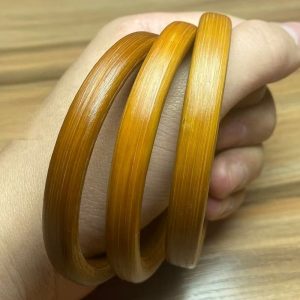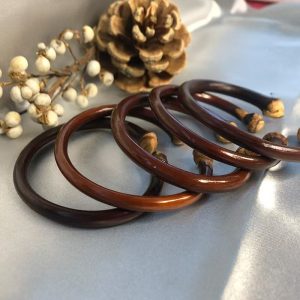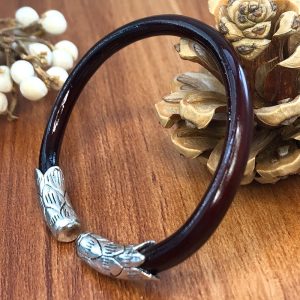he History, Effects, and Benefits of Spatholobus (Jixueteng), and Its Different Effects When Worn by Men and Women
1. Historical Background
Spatholobus (Spatholobus suberectus Dunn), also known as “Jixueteng” in Chinese, is a leguminous plant first recorded in the Compendium of Materia Medica Supplements during the Qing Dynasty. It has been widely used by ethnic minorities in southwestern China. According to the Shunning Prefecture Records, it was revered as the “sacred herb for blood disorders” because its vine stem exudes a dark red sap resembling chicken blood when cut, hence its name.
In Tibetan medicine, Spatholobus bracelets (called “Ba” in Tibetan) are considered ancient Tibetan ornaments originating from the Shannan region of Tibet. They grow at altitudes above 4,000 meters and are harvested strictly between September and November, making them highly precious.
2. Effects and Functions
Spatholobus is warm in nature, slightly bitter and sweet in taste, and primarily acts on the liver and kidney meridians. Its main benefits include:
Promoting Blood Circulation & Nourishing Blood
Used for anemia, sallow complexion, irregular menstruation, dysmenorrhea, and amenorrhea, often combined with Angelica sinensis (Danggui) and Ligusticum chuanxiong (Chuanxiong) in traditional formulas like Siwu Tang.
Modern research shows it can increase hemoglobin levels and improve anemia.
Relieving Rigidity and Activating Collaterals
Treats rheumatic pain, post-stroke paralysis, and limb numbness, often paired with Astragalus membranaceus (Huangqi) and Pheretima (Dilong).
High doses (200-500g) are used for myasthenia gravis and vascular tension headaches.
Regulating Menstruation and Alleviating Pain
Gynecological experts like Ban Xiuwen commonly use it to treat menstrual disorders caused by blood stasis or deficiency.
Other Modern Applications
Anti-tumor effects (inhibits breast cancer cell proliferation).
Anti-inflammatory and analgesic (relieves gouty arthritis).
Improves cardiovascular health (prevents thrombus formation).
3. Different Effects When Worn by Gender
In Tibetan culture, Spatholobus bracelets are believed to have medicinal and spiritual benefits, with varying effects for men and women:
For Women
Regulates menstruation: Relieves dysmenorrhea and irregular periods.
Beautifies skin: Its blood-nourishing properties help improve a pale complexion.
Wards off evil and protects: Tibetan tradition holds that the bracelet can dispel negative energy and safeguard the wearer.
For Men
Boosts physical strength: Alleviates lower back pain and fatigue.
Enhances qi and blood circulation: Beneficial for those with weakness-related sexual dysfunction.
Relieves joint pain: Helps with rheumatism and arthritis.
4. Precautions
Pregnant women and those with heavy menstrual bleeding should use with caution.
Individuals with yin deficiency and internal heat should combine it with yin-nourishing herbs.
The bracelet should avoid contact with strong alkaline substances (e.g., shampoo, soap) and be regularly oiled for maintenance.
Conclusion
Spatholobus serves both as a traditional Chinese herb and a protective Tibetan ornament. Women wear it primarily for menstrual regulation and beauty, while men use it to enhance vitality and improve blood circulation. Its medicinal applications are extensive, but proper usage should be based on individual constitution.
Related products
Bloodvine Bracelet
Bloodvine Bracelet
Bloodvine Bracelet
Bloodvine Bracelet
Bloodvine Bracelet
Bloodvine Bracelet
Bloodvine Bracelet
Bloodvine Bracelet




